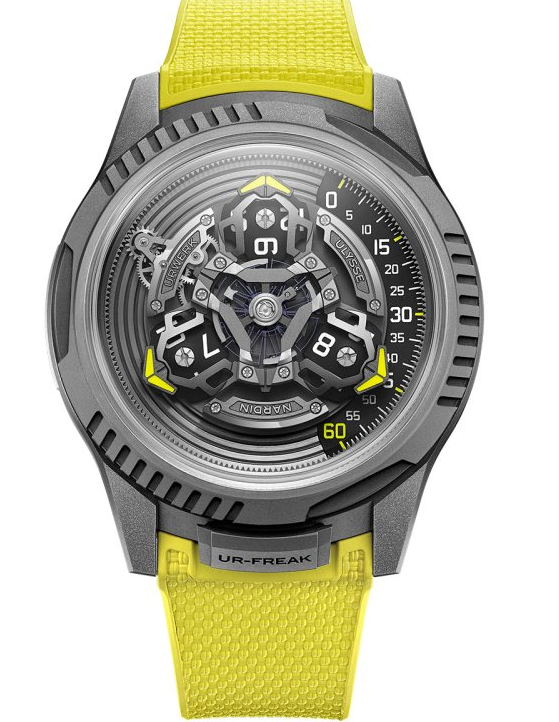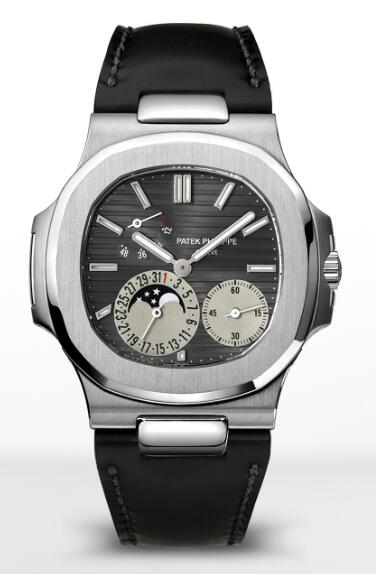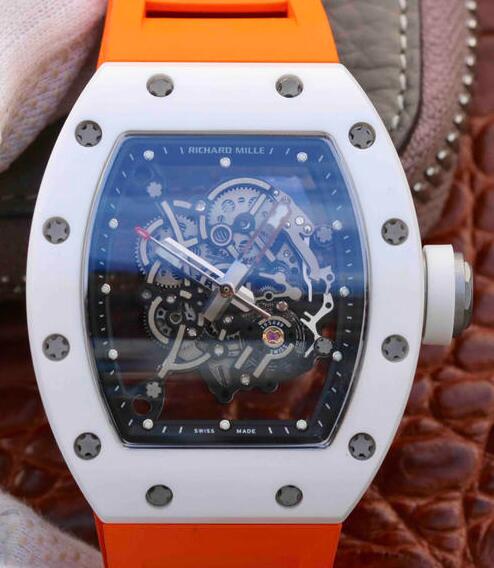zelin0802 / November 12, 2025
Zenith El Primero replica
Zenith El Primero replica: A “Speed Legend” in Mechanical Timekeeping Zenith’s El Primero collection is a landmark chronograph collection in the history of haute horlogerie. Its core highlight lies in the 1969 launch of the world’s first automatic high-frequency chronograph movement (the El Primero caliber), which completely redefined the technical standards of mechanical timekeeping and remains the brand’s “soul product line” to this day.
I. The Birth of the El Primero: The Starting Point of a “Timekeeping Revolution”
In the late 1960s, the mechanical watch industry was on the eve of the “Quartz Crisis” and at the same time reached the peak of the “chronograph technology race”—major brands competed to develop more accurate and reliable automatic chronograph movements. On March 3, 1969, Zenith officially released the El Primero caliber (Spanish for “First”), competing with the Omega Speedmaster Professional (manual-winding) and Breitling Chronomat (automatic but low-frequency), both released the same year. However, its technological advantages were truly “distinct”:
A breakthrough in high-frequency movements: While traditional chronograph movements typically beat at 18,000 vibrations per hour (2.5Hz), the El Primero caliber achieved a frequency of 36,000 vibrations per hour (5Hz). This higher frequency meant:
Timing accuracy was improved from the traditional 1/5 second to 1/10 second, resulting in a smoother movement across the dial, eliminating any “jumping” sensation; review replica watches
The movement was also more resistant to external shocks, resulting in greater timekeeping stability.
Automatic Winding + Full Function Integration: This watch, for the first time, achieves the highly integrated functionality of “automatic winding” and “chronograph, calendar, and day of the week.” Measuring only 6.5mm thick (an ultra-thin automatic chronograph movement at the time), it balances complex functionality with wearer comfort.
Mass Production and Durability: The El Primero movement is not a “concept piece” but rather a stable mass-produced movement with long-term market validation. The first model (Cal. 3019 PHC), launched in 1969, still has numerous examples in perfect working order, demonstrating the reliability of its structural design.
II. Core Technology: The “Enduring Gene” of the El Primero Movement
After more than half a century of iterations, the core design of the El Primero movement (high frequency, automatic winding, column-wheel chronograph) remains unchanged, with only minor refinements. Currently, the mainstream model is the caliber 400 series (an upgrade based on the original movement). Key technical highlights include:
Technical Features Specific Advantages Industry Significance
5Hz high-frequency vibration frequency: Timing accuracy reaches 1/10 second, and timekeeping is more stable. This defines the “high-frequency standard” for modern mechanical timekeeping, and many subsequent brands (such as the Rolex Daytona caliber 4130) have followed suit. replica richard mille rm 067 watches
Column-wheel chronograph mechanism: The chronograph start/stop/reset operation is smoother and more precise, and it is less susceptible to wear over time. Unlike cam-type mechanisms, it is a hallmark of high-end chronographs.
Dual-barrel design: The power reserve is increased from the original 48 hours to 50 hours (some models reach 60 hours), meeting the needs of daily wear. This balances the power consumption of high-frequency movements, solving the problem of “high frequency = zero return.” The industry challenge of “short power” is addressed.
Free-sprung balance springs. Later upgraded models feature free-sprung balance springs (with adjusting weights), enabling more precise adjustment and minimizing the effects of temperature and magnetic fields. This improves the movement’s long-term precision stability, aligning with the technological trends of modern fine watchmaking.
III. Classic Series: The El Primero “Family Matrix”
The El Primero series isn’t a single style, but rather encompasses multiple sub-categories, including classic, sport, vintage, and complex functions. The following are the most representative sub-series:
- El Primero Original (Replica/Classic)
Positioning: A tribute to the original 1969 model, featuring a “retro aesthetic combined with original technology” approach.
Design Highlights: 38-40mm case diameter (perfectly vintage-inspired dimensions), silver-white/black dial with either a “panda” dial (white with black chronograph markers) or a “reverse panda” dial (black with white chronograph markers). Chronograph hands are often in striking red/blue. Powered by the classic caliber 400.
Representative Model: El Primero A386 (Replica/Classic) The first model, released in 1969, features a rhodium-plated silver dial, blue chronograph hands, and a stainless steel strap.
- El Primero Chronomaster Sport (Sports “Top Seller”)
Positioning: A hit model released in 2020, it combines both everyday wear and sporty appeal, focusing on a “youthful” and highly recognizable design.
Design Highlights: 41mm case diameter (suitable for most wrists), signature “rainbow bezel” (ceramic bezel inlaid with colored sapphires corresponding to different time units), sun-brushed and brushed dial, and the upgraded Caliber 400 movement (50-hour power reserve).
Market Position: After its release, it quickly became the best-selling model in the El Primero collection, even becoming incredibly hard to find. It is a core product in the brand’s “youthful transformation” strategy.
- El Primero Revival (Retro Revival)
Positioning: A re-edition of classic styles from the 1970s and 1980s, featuring a “nostalgic style combined with modern technology” aesthetic.
Design Highlights: Case sizes range from 39-42mm, with dials featuring vintage finishes such as “smoked gradient” and “enamel.” Case materials include stainless steel and rose gold. Some models feature a leather strap with a folding clasp for a more vintage feel. The movement remains an upgraded version of the caliber 400 series.
Representative Model: El Primero Revival Shadow (smoked black dial, black PVD case, and brown leather strap, creating a “vintage tool watch” vibe).
- El Primero Chronomaster Open (See-Through Caseback)
Positioning: Focused on “movement viewing,” allowing users to directly experience the operation of the El Primero high-frequency movement.
Design Highlights: The dial features a “skeleton window” (usually at 6 or 9 o’clock), allowing direct visibility of the movement’s balance wheel and escapement. The caseback features a sapphire crystal, fully displaying the movement’s polished details (such as Geneva stripes and perlage).
Core Selling Point: Combining “technical aesthetics” with “visual experience,” it’s suitable for watch lovers who appreciate mechanical architecture.
IV. The “Legendary Story” of the El Primero: From “Discontinuation Crisis” to “Rebirth”
The El Primero’s history has not been smooth sailing, and it almost reached its demise:
The Quartz Crisis of the 1970s: Quartz watches, boasting “low cost and high precision,” flooded the market, forcing Zenith to scale back its mechanical movement production. In 1975, Zenith officially announced the discontinuation of the El Primero movement and planned to destroy the design drawings and tools.
The Engineer’s “Secret Guarding”: Charles Vermot, the engineer in charge of the development of the El Primero movement at the time, was unwilling to let the technology be lost. He secretly hid the movement’s design drawings, molds, and components in the attic of the Zenith factory for 20 years.
The Rebirth of the 1990s: In the late 1980s, as the mechanical watch market gradually recovered, Zenith decided to relaunch the El Primero series. Charles Vermot shared his treasured archive and revived the movement in its original form. In 1994, the El Primero was reissued. The release of watches featuring this movement quickly sparked a market craze, and the El Primero became a symbol of the “revival of mechanical cheap replica watches.”
V. Summary: Why is the El Primero the “benchmark of chronographs”?
The El Primero’s value lies not only in its title as the “world’s first automatic high-frequency chronograph movement,” but also in its profound impact on the industry:
Technically: It established the industry understanding that “high frequency = high precision,” promoting the miniaturization and integration of automatic chronograph movements.
Culturally: Its story of “being protected and reborn” during the quartz crisis has become a spiritual symbol of the “persistence and inheritance” of mechanical watchmaking.
Product-wise: From vintage models to sports models, from basic chronographs to complex functions, the El Primero collection consistently maintains a balance between technology and aesthetics, becoming a classic choice for watchmakers of all generations.
Today, the El Primero remains Zenith’s core competence, and every watch equipped with this movement continues the legend of “speed and precision.” patek philippe tourbillon replica


